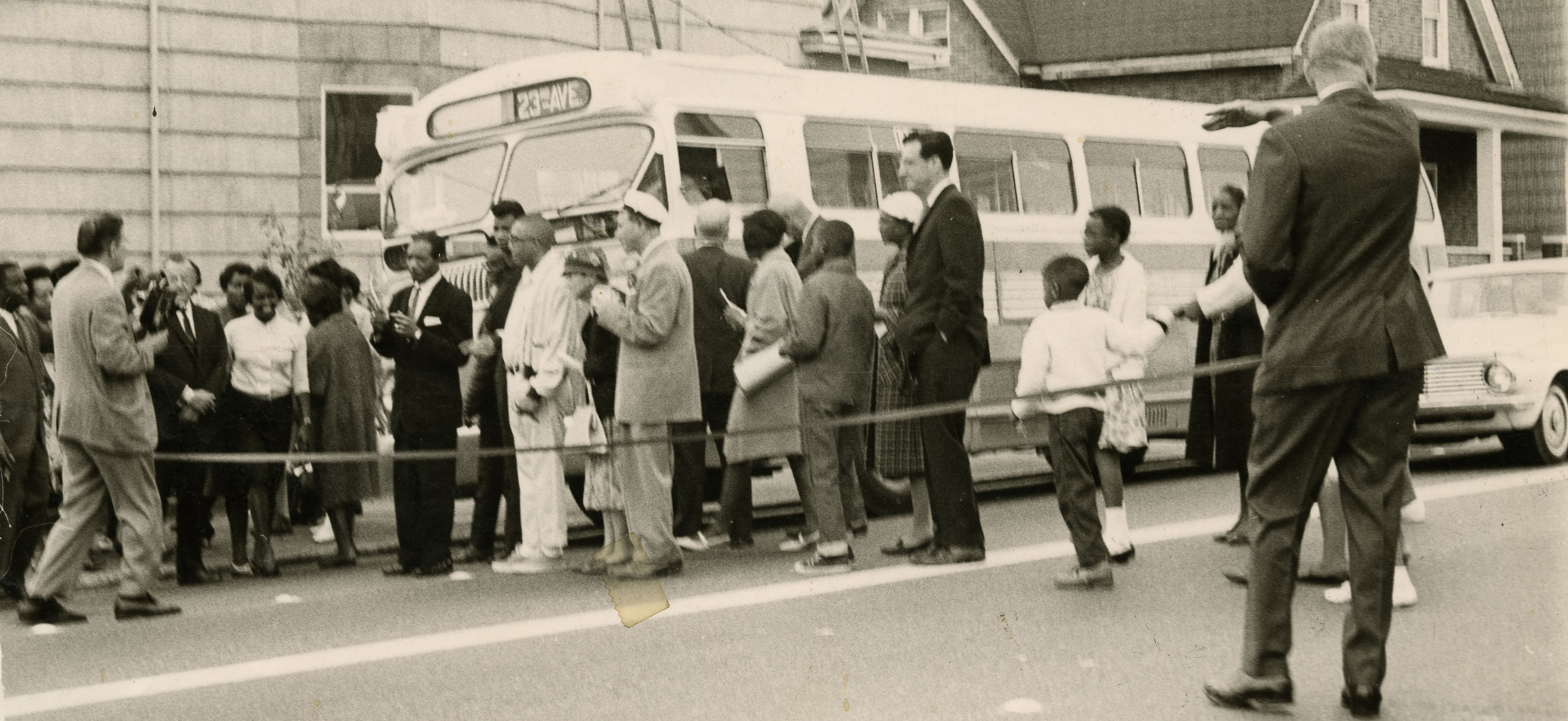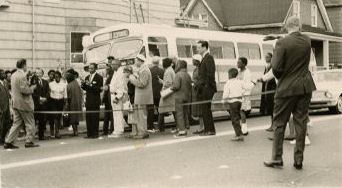Seattle in Black and White


In 1966 another practical legacy included CORE's efforts, working with other community organizations, in gaining north-south transportation, a much needed link between Franklin High School and the University District -- now known as the #48.
The Crosstown Bus by Maid Adams
"Why was I all alone on the Queen Anne bus in the middle of the night? Investigating. Here's why. Up through the mid-1960s the Central Area had no direct public transportation to the University District. Students wanting to attend the universtiy and people who had jobs in that vicinity had to take a bus downtown and transfer from there to the University District, a time-consuming process. Late in the summer of 1966, Seattle CORE launched an action project to get the Seattle Transit system to run a bus along Twenty-Third Avenue, connecting the Central Area with the University District and points north and south. I was an active participant. When CORE negotiators discussed the need for this direct service, I remember the transit authority told us, 'There is no need.' 'No one would ride,' so it would 'not be profitable.'"

Photo credits: CORE, Matson Collection
The Congress of Racial Equality and the Fight For Equal Opportunity
"CORE and other organizations formed the Crosstown Bus Committee. CORE members set about gathering facts about rider patterns on existing transit lines, as well as the number of people transferring downtown to the University District. We rode buses on existing lines and recorded the number of riders in the morning, afternoon, and evening and on the last runs of the night. Investigating the route from downtown to Queen Anne Hill, I rode the bus at 1:00 a.m. while my husband was home with our young son. I was the only passenger. My experience and that of other testers proved our point that many established routes had sparse ridership except at peak times. Armed with these facts, and after additional meetings with transit managers, CORE prevailed. Seattle Transit initiated a route using Twenty-Third Avenue directly to the University District. This was known for some time as the crosstown bus. It is now taken for granted as the number 48 bus, frequently full and clearly a success. This was a major victory for CORE -- bringing a significant service to the Central Area's people." --Seattle in Black and White
In Seattle in the early 1960s, Farwest and Graytop cab companies hired white drivers exclusively. Yellow Cab had a better track record with 35 Black drivers out of 400 employees. To bring about change, CORE leadership exerted pressure on the Port of Seattle to require a nondiscriminatory clause in contracts with private companies. On February 25, 1964, the Port of Seattle passed Resolution 2158 which forbade employment discrimination based on race, creed, color or national origin. Despite this resolution, Farwest and Graytop cab companies did not hire Black drivers. To apply pressure on company leaders, CORE initiated a boycott of the two taxi companies with roving picketing, bumper stickers, and fliers, while enlisting porters at SeaTac Airport to boycott Farwest and Graytop at the airport. Later, Seattle School District forced Farwest to adopt a similar anti-discrimination clause in contacts with Farwest. By 1965, Farwest had changed its employment policy regarding hiring Black drivers, and as reported in the 1965 Corelator, Farwest had hired two Black drivers. --Seattle in Black and White